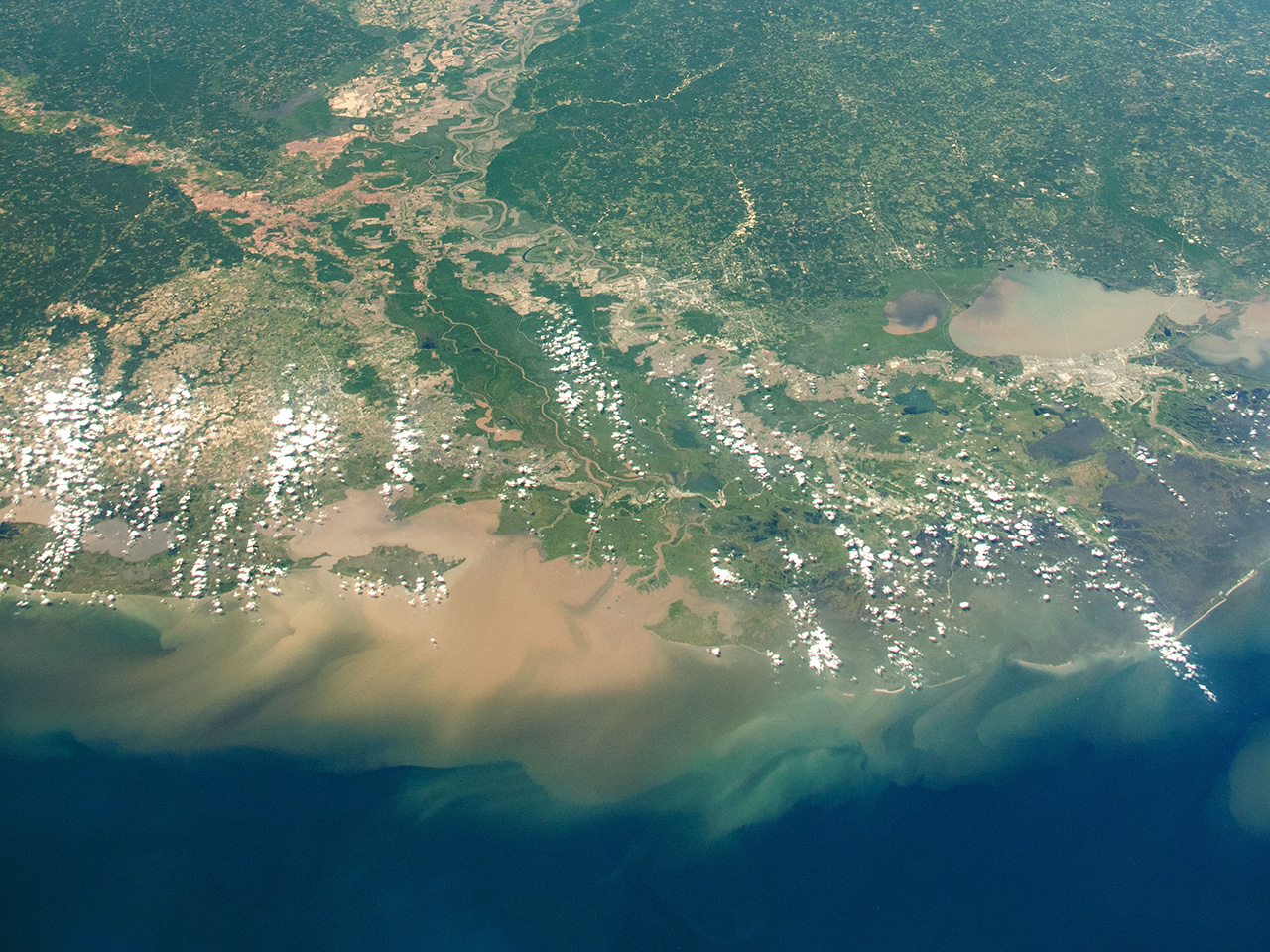Downstream damage in 2019: how the Midwest kills fish in the Gulf of Mexico
The Mississippi River Delta as seen from the International Space Station this April shows the result of widespread flooding: sediment washed downstream and into the water along the coastline, which may lead to another near-record dead zone. (Image ISS059-E-36323 (link is external) courtesy of the Earth Science and Remote Sensing Unit, NASA Johnson Space Center (link is external).)
If you live in the Upper Midwest, you’re probably ready for a few consecutive days of sunshine and summer weather. Farmers, in particular, could use a break from the downpours. This year's incessant rain (link is external) has strained many downstream communities to the breaking point, as flooding continues to wreak havoc along the Mississippi River and its tributaries.
A delayed effect of the weather threatens to cause even more damage: Scientists predict a near-record dead zone in the Gulf of Mexico (link is external) in 2019, a phenomenon that suffocates marine life unable to escape from an area that, this year, might be the size of Massachusetts.
What is a dead zone?
Algae and tiny organisms called phytoplankton are important parts of the marine food web. However, when they are given too many nutrients, their populations and density can run amok to the point where there is simply not enough oxygen and food to support them.
When this happens, massive die-offs quickly occur, and the dead algae and phytoplankton sink en masse to the seafloor. Bacterial decomposition uses up the oxygen in the water, suffocating any creatures that can’t quickly make their way out of the area. The resulting “dead zone” can wipe out fish, ocean plants, crustaceans, and even affect marine mammals and birds that rely on these food sources. The ocean becomes a wet desert.
But we’re 1,500 miles from the Gulf!
Dead zones sometimes occur naturally, but the dead zone in the Gulf of Mexico is a humanmade disaster. Conventional agriculture relies on the liberal use of fertilizers containing nitrogen and phosphorous (the very nutrients that make marine microorganisms go into overdrive), not all of which stays in the soil.
As we detailed in the 2016 State of the River Report (link is external), nitrogen — the primary driver of the annual Gulf dead zone — comes primarily from Midwestern croplands including Minnesota's. That's bad news for farmers too; farm operations lose hundreds of millions of dollars each year when fertilizers wash off their fields and head downstream (link is external).
Urban runoff and wastewater treatment effluent can also contribute to the problem, as storm drains and sanitary sewers discharge nutrients into our waterways.
The Mississippi River, in turn, acts like a giant storm drain system, channeling nutrients from its entire watershed (link is external) into the Gulf. That's how fertilizer applied to a cornfield in Traverse County or a football field in St. Paul can very well end up feeding phytoplankton off the coast of Louisiana.
What FMR is doing to help
FMR’s water program is dedicated to addressing the root causes of water pollution, including excess nutrients. We advocate for solutions at the State Capitol and also work with partners to implement solutions on the ground, such as exciting new clean-water crops (link is external) and farming methods that could pay big dividends for water quality and farmers’ bottom lines.
For example, most upper Midwest "row crops" (like corn and soy) only grow during the summer, which means that fields with these crops don't retain much water or fertilizer during the wet spring and autumn months. By moving to new crops that grow year-round like Kernza or pennycress (link is external), we can keep living root systems intact and, in turn, limit runoff.
Want to make a difference?
Sign up as a River Guardian (link is external) and we'll email you when there's a chance to act quickly online for the river. Plus you'll be invited to special events like educational happy hours.
